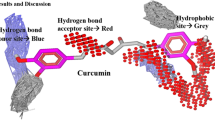Abstract
Several phenyl substituted chromones (also called flavonoids) have been reported to possess substantial anticancer properties; however, their modes of action have not been clearly defined. To preliminarily investigate the potential anticancer activity and mode of action of some synthetic chromone derivatives, the docking was performed using different enzymes and receptor proteins involved with cancer cell cycle, cell growth, and DNA replication, i.e., cyclin-dependent protein kinase-2 (CDK-2), CDK-6, DNA topoisomerases I and II, B-cell lymphoma-2 (Bcl-2), vascular endothelial growth factor receptor-2 (VEGFR-2), and the telomere: G-quadruplexes. The docking results revealed that chromone 32 exhibited better binding interactions to CDK-2 and Bcl-2 than the known CDK-2 and Bcl-2 inhibitors. Chromone 39 was found to bind to CDK-6 with tighter interaction than several reported CDK-6 inhibitors. Chromone 47 was best bound to both DNA topoisomerases I and II. Chromones 24 and 15 showed good binding interaction with VEGFR-2 and telomere: G-quadruplex, respectively. The inhibition constants (K i) of each chromone compound against each target molecule were calculated. These K i values could be used as a preliminary tool for screening specific inhibitors before performing experimental activity assay.









Similar content being viewed by others
References
Ahmad N, Cheng P, Mukhtar H (2000) Cell cycle dysregulation by green tea polyphenol epigallocatechin-3-gallate. Biochem Biophys Res Commun 275:328–334
Ahn YM, Vogeti L, Liu C-J, Santhapuram HK, White JM, Vasandani V, Mitscher LA, Lushington GH, Hanson PR, Powell DR, Himes RH, Roby KF, Ye Q, Georg GI (2007) Design, synthesis, antiproliferative and CDK2-cyclin a inhibitory activity of novel flavopiridol analogues. Bioorg Med Chem 15:702–713
Berger SJ, Gupta S, Belfi CA, Gosky DM, Mukhtar H (2001) Green tea constituents (−)-epigallocatechin-3-gallate inhibits topoisomerase I activity in human colon carcinoma cells. Biochem Biophys Res Commun 288:101–105
Chen K, Adelstein SJ, Kassis AI (2004) Molecular simulation of ligand-binding with DNA: implications for 125I-labeled pharmaceutical design. Int J Radiat Biol 80:921–926
Chowdhury AR, Sharma S, Mandal S, Goswami A, Mukhopadhyay S, Majumder HK (2002) Luteolin, an emerging anti-cancer flavonoid, poisons eukaryotic DNA topoisomerase I. Biochem J 366:653–661
Constantinou A, Mehta R, Runyan C, Rao K, Vaughan A, Moon R (1995) Flavonoids as DNA topoisomerase antagonists and poisons: structure-activity relationships. J Nat Prod 58:217–225
de Azevedo WF Jr, Canduri F, da Silveira NJ (2002) Structural basis for inhibition of cyclin-dependent kinase 9 by flavopiridol. Biochem Biophys Res Commun 293:566–571
Gabor M (1986) Anti-inflammatory and anti-allergic properties of flavonoids. Prog Clin Biol Res 213:471–480
Goodsell DS, Morris GM, Olson AJ (1996) Docking of flexible ligands: applications of AutoDock. J Mol Recognition 9:1–5
Harborne JB, Williams CA (2000) Advances in flavonoid research since 1992. Phytochemistry 55:481–504
Hatipoglu A, Basaran A, Dikmen M, Cosan D, Gunes HV (2007) Effects of quercetin on apoptosis and telomerase activity in NIH-3T3 cell lines compared with tamoxifen. Acta Physiol 190(Suppl 656):P44
Havsteen B (1983) Flavonoids, a class of natural products of high pharmacological potency. Biochem Pharmacol 32:1141–1148
Hu CG, Chen K, Shi Q, Kilkuskie RE, Cheng YC, Lee KH (1994) Anti-AIDS agents, 10. Acacetin-7-O-β-D-galactopyranoside, an anti-HIV principle from Chrysanthemum morifolium and a structure-activity correlation with some related flavonoids. J Nat Prod 57:42–51
Jo J, Mejia E, Lila M (2006) Catalytic inhibition of human DNA topoisomerase II by interactions of grape cell culture polyphenols. J Agric Food Chem 54:2083–2087
Lamy S, Gingras D, Bèliveau R (2002) Green tea catechins inhibit vascular endothelial growth factor receptor phosphorylation. Cancer Res 62:381–385
Leone M, Zhai D, Sareth S, Kitada S, Reed JC, Pellecchia M (2003) Cancer prevention by tea polyphenols is linked to their direct inhibition of antiapoptotic Bcl-2 family proteins. Cancer Res 63:8118–8121
Lu H, Chang DJ, Baratte B, Meijer L, Schulze-Gahmen U (2005) Crystal structure of a human cyclin-dependent kinase 6 complex with a flavonol inhibitor, fisetin. J Med Chem 48:737–743
Matsukawa Y, Marui N, Sakai T, Satomi Y, Yoshida M, Matsumoto K, Nishino H, Aoike A (1993) Genistein arrests cell cycle progression at G2-M. Cancer Res 53:1328–1331
Naasani I, Oh-hashi F, Oh-hara T, Feng WY, Johnston J, Chan K, Tsuruo T (2003) Blocking telomerase by dietary polyphenols is a major mechanism for limiting the growth of human cancer cells in vitro and in vivo. Cancer Res 63:824–830
Nam NH, Parang K (2003) Current targets for anticancer drug discovery. Curr Drug Targets 4:159–179
Neukam K, Pastor N, Cortès F (2008) Tea flavanols inhibit cell growth and DNA topoisomerase II activity and induce endoreduplication in cultured Chinese hamster cells. Mutation Res 654:8–12
Ren W, Qiao Z, Wang H, Zhu L, Zhang L (2003) Flavonoids: promising anticancer agents. Med Res Rev 23:519–534
Su S-J, Yeh T-M, Lei H-Y, Chow N-H (2000) The potential of soybean foods as a chemoprevention approach for human urinary tract cancer. Clin Cancer Res 6:230–236
Toprakci M, Yelekci K (2005) Docking studies on monoamine oxidase-B inhibitors: estimation of inhibition constants (K(i)) of a series of experimentally tested compounds. Bioorg Med Chem Lett 15:4438–4446
Yin F, Giuliano AE, Law RE, Van Herle AJ (2001) Apigenin inhibits growth and induces G2/M arrest by modulating cyclin-CDK regulators and ERK MAP kinase activation in breast carcinoma cells. Anticancer Res 21:413–420
Zapata-Torres G, Opazo F, Salgado C, Muñoz JP, Krauwurst H, Mascayano C, Sepúlveda-Boza S, Maccioni RB, Cassels BK (2004) Effects of natural flavones and flavanoids on the kinase activity of CDK5. J Nat Prod 67:416–420
Acknowledgments
This project is supported by the Office of the Higher Education Commission and Mahidol University under the National Research Universities Initiative.
Author information
Authors and Affiliations
Corresponding author
Rights and permissions
About this article
Cite this article
Maicheen, C., Phosrithong, N. & Ungwitayatorn, J. Docking study on anticancer activity of chromone derivatives. Med Chem Res 22, 45–56 (2013). https://doi.org/10.1007/s00044-012-0009-y
Received:
Accepted:
Published:
Issue Date:
DOI: https://doi.org/10.1007/s00044-012-0009-y




